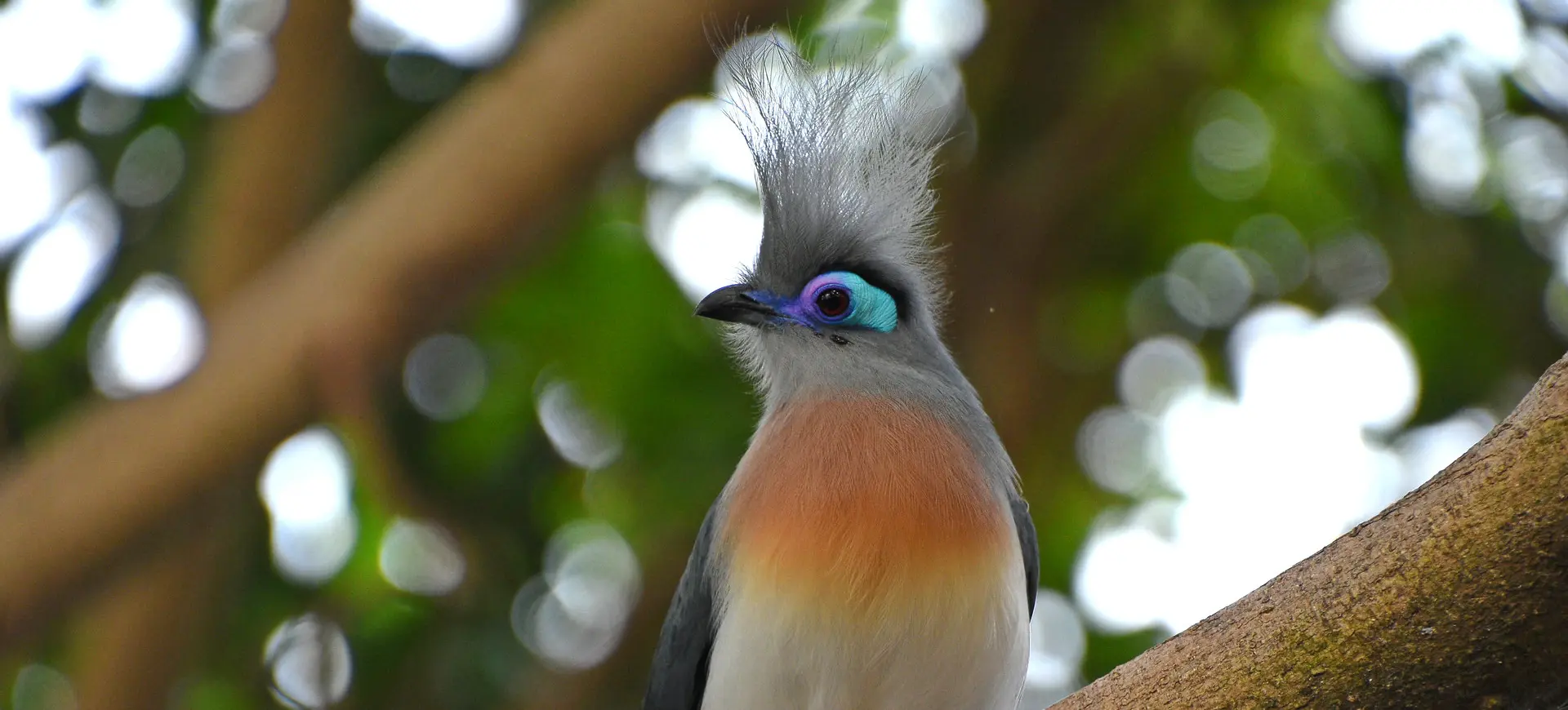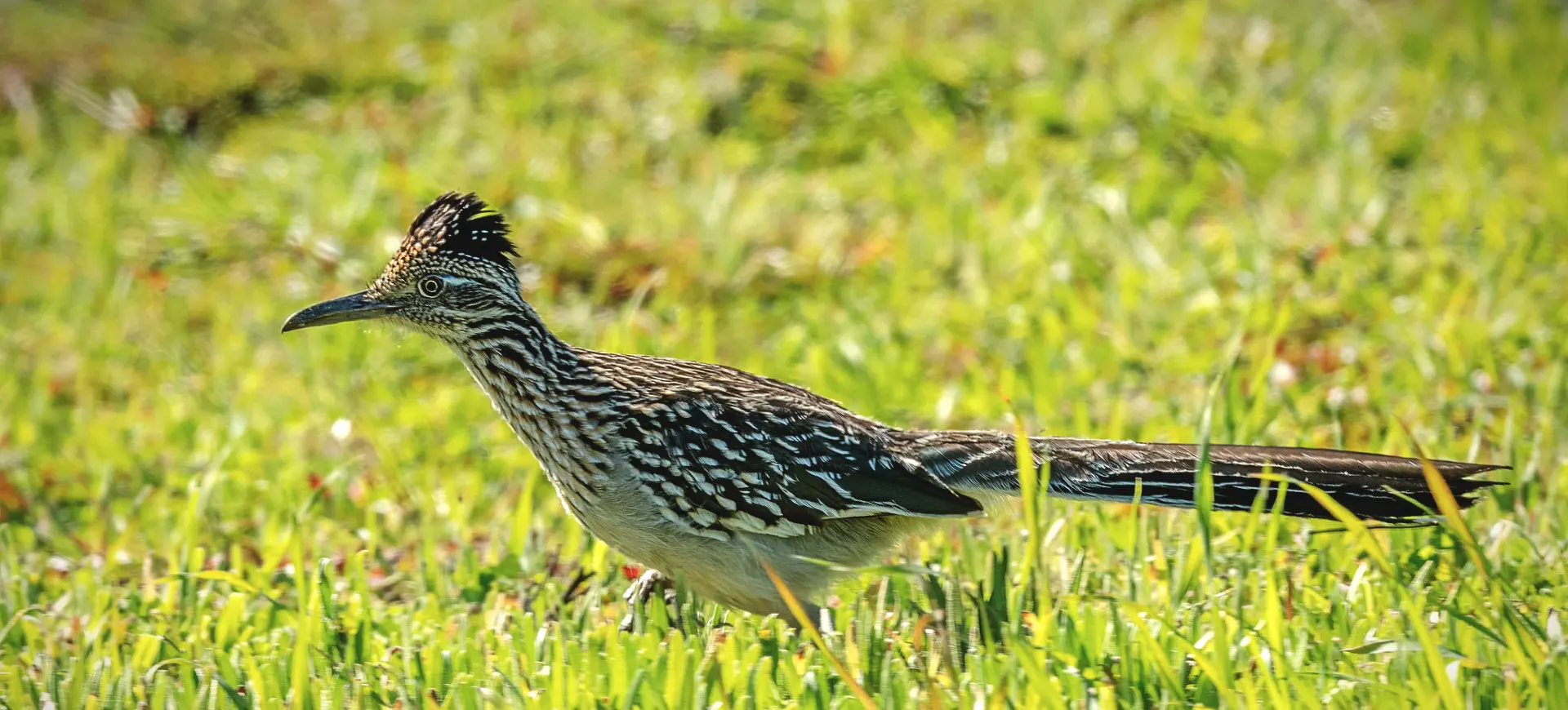Overview
The Guira Cuckoo (Guira guira) is a distinctive bird in open and semi-open habitats across central and eastern South America. This species is notable for its fuzzy appearance, long, ragged tail, and scruffy crest on its head. The plumage is primarily brownish-gray, with streaks of white and a rufous undertone, especially on the wings. The bird’s beak and bare skin around the eye are orange-yellow, adding to its striking appearance.
Guira Cuckoos are relatively social birds, often seen in groups. They are known for loud and harsh calls, a common sound in their habitats. These birds are adaptable and opportunistic feeders, thriving in various environments, including farmland, plantations, and urban areas. Unlike many cuckoo species, Guira Cuckoos are not brood parasites; they build their nests and raise their young.
The bird’s behavior is characterized by cooperative living. Groups of Guira Cuckoos often forage together and engage in communal roosting, especially in colder weather. They are also known to share nesting duties and cooperatively care for their young, which is unusual among cuckoos.
Taxonomy
Kingdom
Phylum
Class
Order
Family
Genus
Species
Type
Physical Description:
Guira Cuckoos are medium-sized birds, measuring about 13 to 16 inches (34 to 40 cm) in length, including the tail. Their plumage is predominantly brownish-gray with white streaks and a rufous tinge on the wings. The feathers often appear unkempt, giving the bird a worn look. The crest on their head is another distinctive feature, usually held erect.
The beak of the Guira Cuckoo is strong and curved, suited for their omnivorous diet. Their legs are relatively short, and their feet are strong, aiding their ability to grasp branches and forage on the ground. The eyes are surrounded by a patch of bare, orange-yellow skin, which stands out against their plumage. Juveniles have duller coloring and lack the well-defined crest of adults.

Lifespan: Wild: ~10 Years || Captivity: ~15 Years

Weight: Male & Female: 2.3-3.0 oz (65-85 g)

Length: Male & Female: 13-16 inches (34-40 cm)
Characteristic:
Native Habitat:
Guira Cuckoos are native to a wide area across central and eastern South America. Their range includes Brazil, Paraguay, Uruguay, Bolivia, and Argentina. They are typically found in open and semi-open habitats, such as savannas, grasslands, and areas with scattered trees. These birds are also common in cultivated areas, plantations, and urban parks, demonstrating their adaptability to human-modified environments.
Their preferred habitats provide ample opportunities for foraging and nesting. Guira Cuckoos are often seen in small groups, perching on fences or low branches, scanning the ground for food. The presence of these birds in agricultural and urban areas indicates their ability to coexist with human activities.
Biomes:
Biogeographical Realms:
Continents:
Diet:
Diet & Feeding Habits:
The Guira Cuckoo is an omnivore, feeding on various food items. Its diet includes insects, small vertebrates like lizards and frogs, eggs, and occasionally small birds. They also consume fruits and seeds, making them important seed dispersers in their ecosystems.
Guira Cuckoos often forage in groups, working together to flush out prey. They follow larger animals or machinery to catch insects disturbed by their movement. This opportunistic feeding strategy allows them to thrive in various environments, including human-altered landscapes. The bird’s diet reflects its adaptability and plays a role in controlling insect populations in their habitats.
Mating Behavior:
Mating Description:
Guira Cuckoos exhibit cooperative breeding behavior, which is relatively rare among birds. They form communal nests, where several females lay their eggs. These nests are typically built in trees or shrubs and can contain many eggs from different females.
The communal aspect extends to incubation and chick-rearing. Multiple adults, both males and females, care for the eggs and young. This cooperative behavior increases the chances of survival for the offspring, as there are more adults to protect and feed the young. The social structure during the breeding season is complex, with group dynamics crucial in reproductive success.
Reproduction Season:
Birth Type:
Pregnancy Duration:
Female Name:
Male Name:
Baby Name:
Social Structure Description:
Guira Cuckoos are known for their social behavior, often forming groups that can include unrelated individuals. These groups engage in cooperative activities such as foraging, roosting, and breeding. Group living provides several advantages, including increased vigilance against predators and greater efficiency in locating food.
Social interactions among Guira Cuckoos are complex, with group dynamics influencing feeding, mating, and nesting behavior. Their communal nesting and cooperative chick-rearing are noteworthy, setting them apart from many other bird species.
Groups:
Conservation Status:
Population Trend:
The Guira Cuckoo is listed as “Least Concern” by the IUCN, reflecting its wide distribution and stable population numbers. Their adaptability to various habitats, including those altered by human activities, has helped them maintain robust populations. However, like all wildlife, they are potentially vulnerable to extensive habitat destruction and environmental changes.
In their native range, Guira Cuckoos are commonly observed, especially in open and semi-open landscapes. Their presence in agricultural areas can be beneficial for pest control. Ongoing monitoring and habitat conservation are essential for ensuring their continued success in a rapidly changing environment.
Population Threats:
The primary threats to the Guira Cuckoo include habitat loss and degradation due to agricultural expansion and urbanization. Although they are adaptable to human-altered landscapes, extensive habitat destruction could impact their populations. Additionally, pesticide use in agricultural areas risks food sources and overall health.
Despite these threats, the species’ flexibility in diet and habitat choice has allowed it to thrive in many areas. Conservation efforts should focus on sustainable land use and minimizing harmful agricultural practices to ensure their continued survival.
Conservation Efforts:
Conservation efforts for the Guira Cuckoo include habitat protection and sustainable land management. Preserving open and semi-open habitats and promoting eco-friendly agricultural practices are key to maintaining healthy populations. Environmental education and awareness programs can also contribute to their conservation by informing the public about the importance of these birds in ecosystems.
In areas where they coexist with human activities, Guira Cuckoos can serve as indicators of environmental health. Promoting biodiversity-friendly practices in agriculture and urban planning can benefit this species and the broader ecosystem.
Additional Resources:
Fun Facts
- Guira Cuckoos are among the few cuckoo species that are not brood parasites.
- Their shaggy and unkempt appearance gives them a unique look among birds.
- They are known for loud and harsh calls, a common sound in their habitats.
- Guira Cuckoos are opportunistic feeders, able to exploit various food sources.
- Their cooperative breeding behavior is rare among birds and provides advantages in raising young.
- They are adaptable to a range of environments, including urban areas.
- The species plays an important role in controlling insect populations in their habitats.
- Guira Cuckoos can be beneficial in agricultural areas by feeding on pests.
- Their communal roosting behavior helps them conserve heat in colder weather.
- Conservation efforts for Guira Cuckoos focus on habitat protection and sustainable land use.












